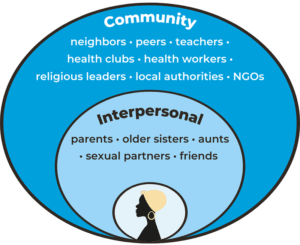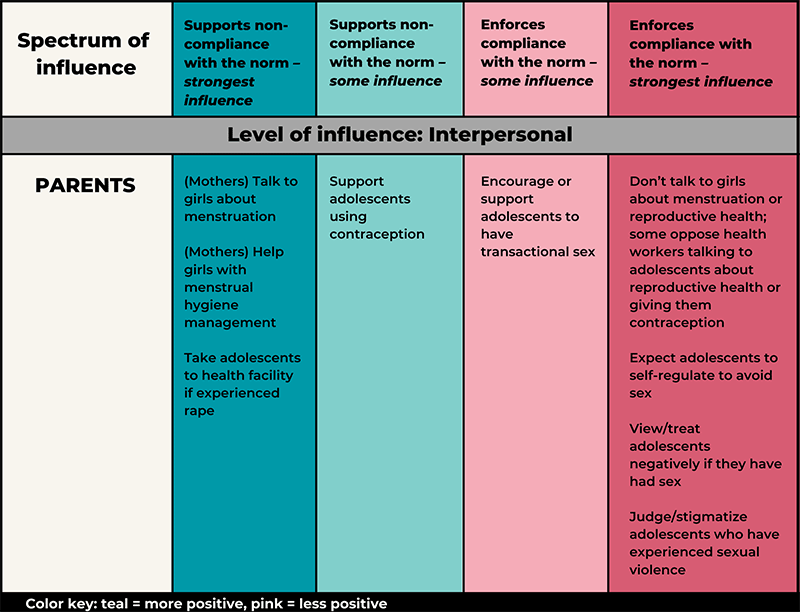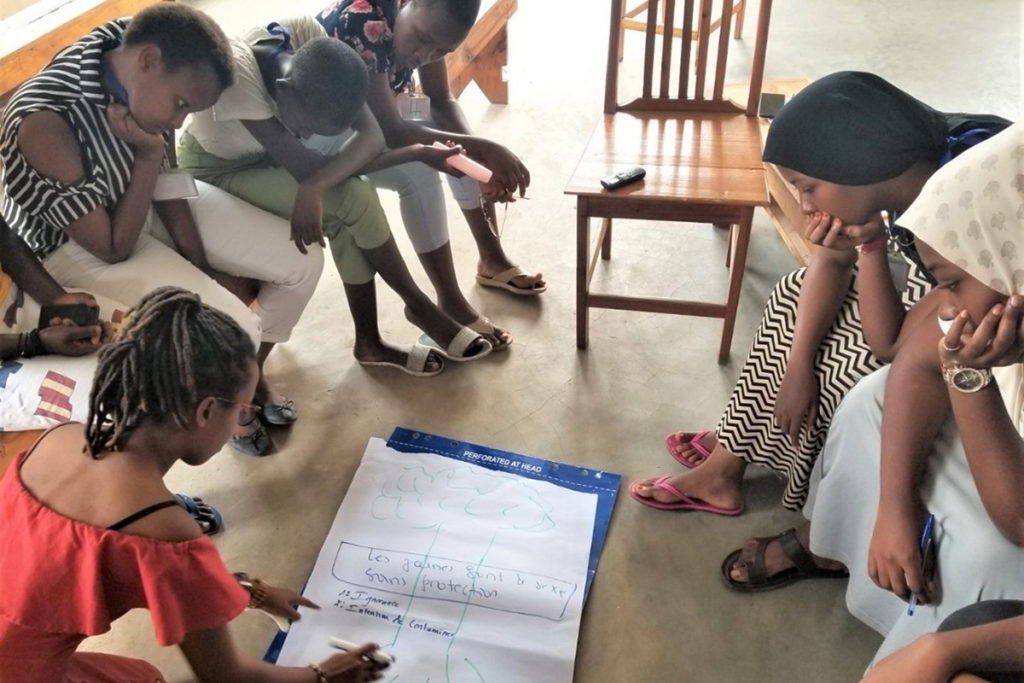Social norms are particularly relevant among young people. Compared to adults, young people have less power in society to make or break social rules. Additionally, peer relationships become more influential during adolescence. In many low- and middle-income countries, such as Burundi, social norms are not well documented, but they likely have a large influence on adolescent girls’ and young women’s ability to access reproductive health information and care.
The Passages Project—funded by the United States Agency for International Development (USAID)—recently completed a qualitative study researching social norms affecting the reproductive health of adolescent girls and young women in four provinces in Burundi. In this post, we summarize the findings from that study and recommend how they might be applied.
Methods
1. Menstruation and menstrual hygiene management (MHM)
2. Sexual risk behaviors
3. Sexual violence
4. Fertility and voluntary use of family planning
We collected data from adolescent girls and young women and also from the groups of people that influence the social norms (i.e., key influencers) for each of these behaviors. To do this, in each province, we first conducted focus group discussions with adolescent girls and young women (n= 12 FGDs). We then recruited the groups of people they reported as influencers for focus group discussions on the same domains of inquiry. We conducted 18 focus group discussions with key influencers, which included mothers of adolescent girls and young women, health providers, agents de santé communautaire (community health workers), teachers, peer educators/student health club members and local leaders (i.e., local administrators, religious leaders and members of a child protection committee).
Within each domain of inquiry, we asked study participants what was the common behavior or practice among adolescent girls and young women in that community as well as what was considered the socially acceptable or approved of behavior for adolescent girls and young women (i.e., social norms). We also asked about what social consequences adolescent girls and young women faced if they did not comply with what was the common or socially approved of behavior or practice (i.e., sanctions).
Four analysts coded transcripts using NVivo qualitative software and summarized codes in an analysis matrix using Microsoft Excel. Data in the matrices and NVivo coding reports were checked for consistency, systematically reviewed and further reduced to identify key norms within each domain of inquiry as well as those that cut across domains. For each of the key norms identified, the sanctions and the key influencers that were discussed as relevant to each were also identified.
What can we learn from the Burundi study?
Targeting adolescents alone will not achieve social norms change. The study identified eight different reproductive health social norms that adolescent girls were expected to follow, such as managing their menstrual hygiene discreetly and not getting pregnant before marriage. Yet, they did not have sufficient support, power, agency, or information to make informed, independent choices about their reproductive health. Rather, the social norms that adolescents are pressured to comply with are enforced and upheld by many others in the broader social community (Figure 1).

Figure 1. Proximity of influencers to adolescent girls and young women.
Adolescents are influenced directly and indirectly by different groups. Study participants named a variety of different types of people who influence adolescent reproductive health norms. Some groups included individuals such as parents, sexual partners, and peers with whom adolescents interact frequently and have direct interpersonal relationships. Other groups within the community, such as religious leaders, local administrators, and health providers, have less direct interaction with adolescents but still exert influence due to their social status.
Influence groups play multiple roles. Some influence groups served as both Enforcers and Social Supporters. For example, parents influenced adolescents’ reproductive health social norms in multiple ways (Figure 2).

Figure 2. Illustration of range of parental influence on adolescents’ reproductive health norms compliance.
How can these learnings be applied in programs?
The fact that multiple influence groups exist, many of which both enforce and provide support for opposing harmful norms, has important implications for program design and implementation.
Involve multiple groups in addition to adolescents. Since adolescents do not hold the power to change or defy social norms by themselves, programs are likely to be more effective when they involve key influence groups in meaningful ways. Two examples are convening health providers to reflect on their own biases and working with faith leaders to incorporate positive views on reproductive health in their sermons.
Encourage and redirect simultaneously. Programs should keep in mind that many influence groups play both positive and negative roles in upholding social norms. Program messages and activities should be designed to minimize and redirect how these groups enforce harmful norms. At the same time, programs should nurture the positive roles that these groups play, which could contribute to the development of new positive norms.
A version of this post originally appeared on Knowledge Success.
Photo credit: Diane Mpinganzima



